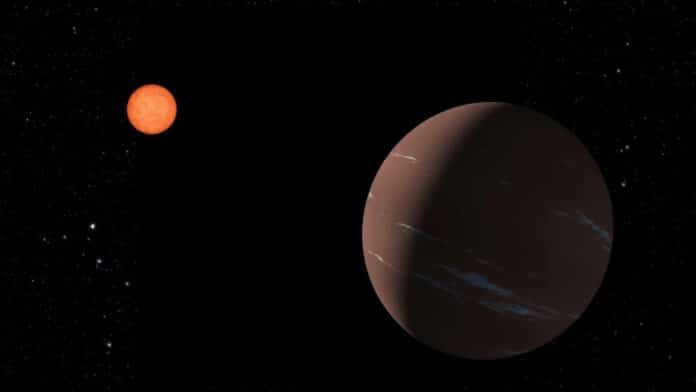Scientists are entering a new phase in comprehending exoplanets – planets outside our solar system. Modern space instruments, including those on NASA‘s James Webb Space Telescope, are not only capable of detecting these far-off planets but are designed to unveil details about them. This includes insights into the composition of their atmospheres, a key aspect that might provide hints about the potential existence of life in these distant worlds.
Recently, astronomers discovered a “super-Earth” ripe for further investigation orbits a small, reddish star that is, by astronomical standards, reasonably close to us – only 137 light-years away. The same system also might harbor a second, Earth-sized planet.
The giant planet, named TOI-715 b, is approximately one and a half times the size of Earth. It orbits within what scientists call the “conservative” habitable zone around its parent star. This zone represents the distance from the star where the planet could have the right temperature for liquid water to exist on its surface.
Although other factors need to align, like having a suitable atmosphere, being in this conservative habitable zone is considered a favorable position based on preliminary measurements. The minor planet might be slightly larger than Earth and could be located just inside the conservative habitable zone.
The recently discovered super-Earth, TOI-715 b, is in a promising position due to its orbit around a red dwarf star. Red dwarfs are smaller and cooler than our Sun, making them favorable hosts for minor, rocky planets. These planets, despite their closer orbits, can still be within the star’s habitable zone. The proximity allows for more frequent and easily detectable transits, where the planet crosses in front of its star, as observed from our space telescopes. TOI-715 b, for example, completes this transit every 19 days.
TESS (Transiting Exoplanet Survey Satellite), which found TOI-715 b, has been instrumental in discovering habitable-zone exoplanets since its launch in 2018. The more minor, frequent transits make detecting and observing such planets easier. With its advanced capabilities, the Webb telescope could closely examine TOI-715 b, potentially analyzing its atmosphere for signs of habitability.
The ability to scrutinize these planets more frequently and in greater detail opens up possibilities for studying their properties, such as mass, and whether they could be classified as “water worlds,” with more detectable atmospheres than denser, drier worlds.
The potential confirmation of a second, Earth-sized planet in the same system would mark a significant discovery for TESS. It could be the most minor habitable-zone planet identified by TESS to date if verified. The finding has surpassed initial expectations for TESS, as it has uncovered an Earth-sized world within the habitable zone, contributing valuable insights to our understanding of exoplanets and their potential habitability.
Journal Reference:
- Georgina Dransfield, Mathilde Timmermans et al. A 1.55 R⊕ habitable-zone planet hosted by TOI-715, an M4 star near the ecliptic South Pole. Monthly Notices of the Royal Astronomical Society. DOI: 10.1093/mnras/stad1439
